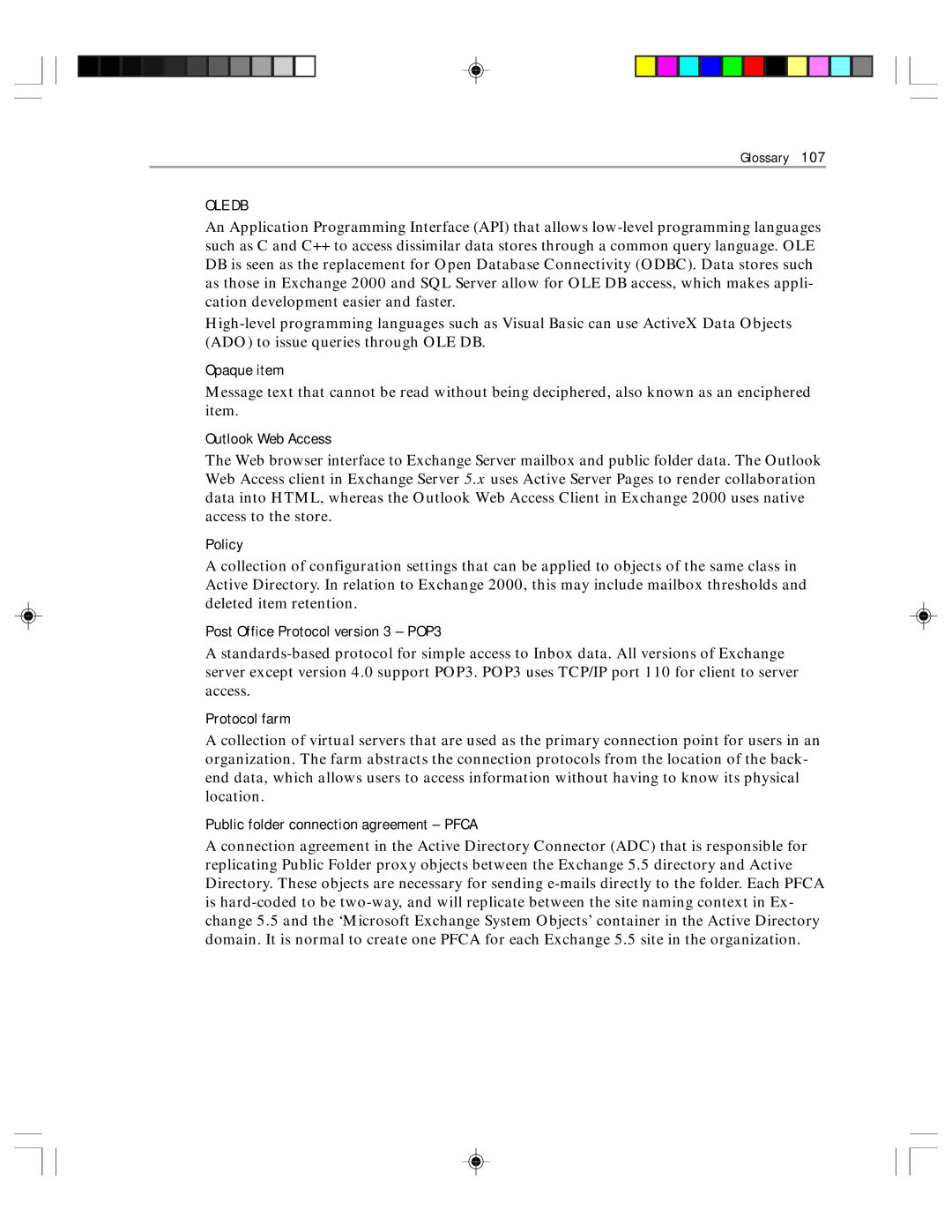
Glossary 107
OLE DB
An Application Programming Interface (API) that allows
Opaque item
Message text that cannot be read without being deciphered, also known as an enciphered item.
Outlook Web Access
The Web browser interface to Exchange Server mailbox and public folder data. The Outlook Web Access client in Exchange Server 5.x uses Active Server Pages to render collaboration data into HTML, whereas the Outlook Web Access Client in Exchange 2000 uses native access to the store.
Policy
A collection of configuration settings that can be applied to objects of the same class in Active Directory. In relation to Exchange 2000, this may include mailbox thresholds and deleted item retention.
Post Office Protocol version 3 – POP3
A
Protocol farm
A collection of virtual servers that are used as the primary connection point for users in an organization. The farm abstracts the connection protocols from the location of the back- end data, which allows users to access information without having to know its physical location.
Public folder connection agreement – PFCA
A connection agreement in the Active Directory Connector (ADC) that is responsible for replicating Public Folder proxy objects between the Exchange 5.5 directory and Active Directory. These objects are necessary for sending
